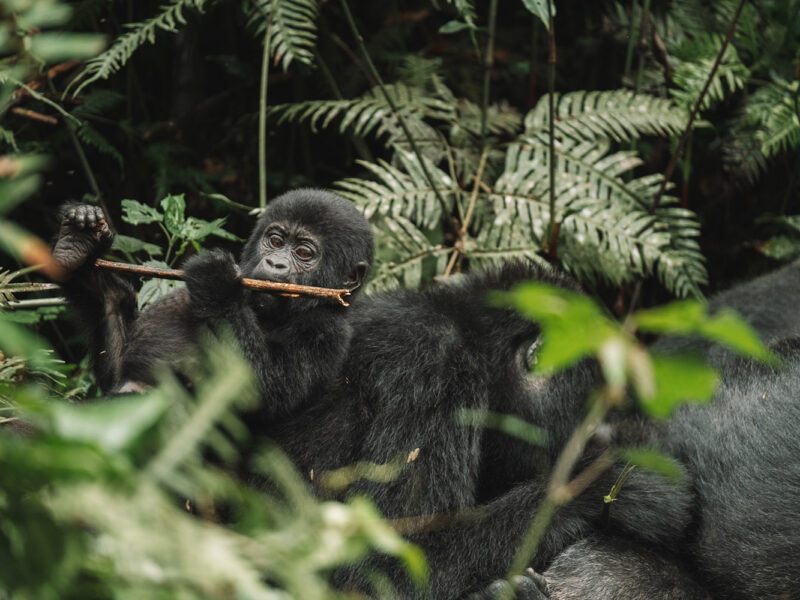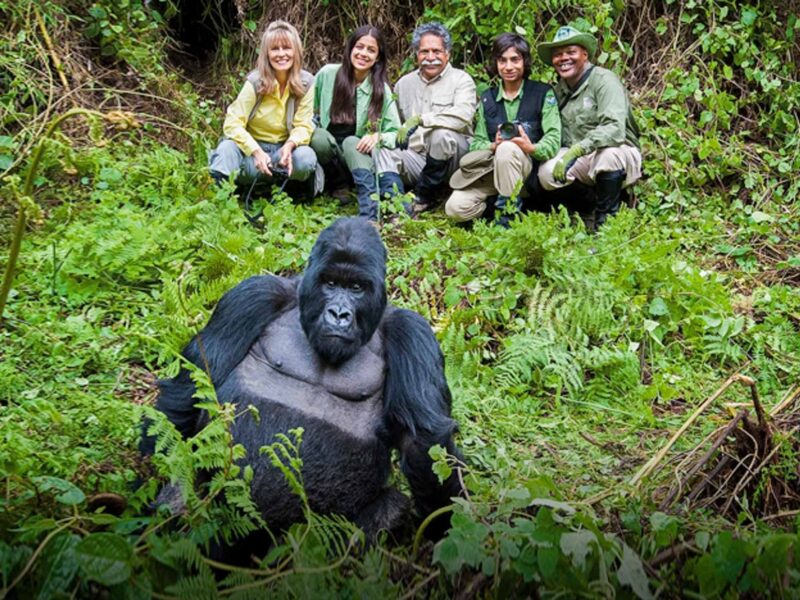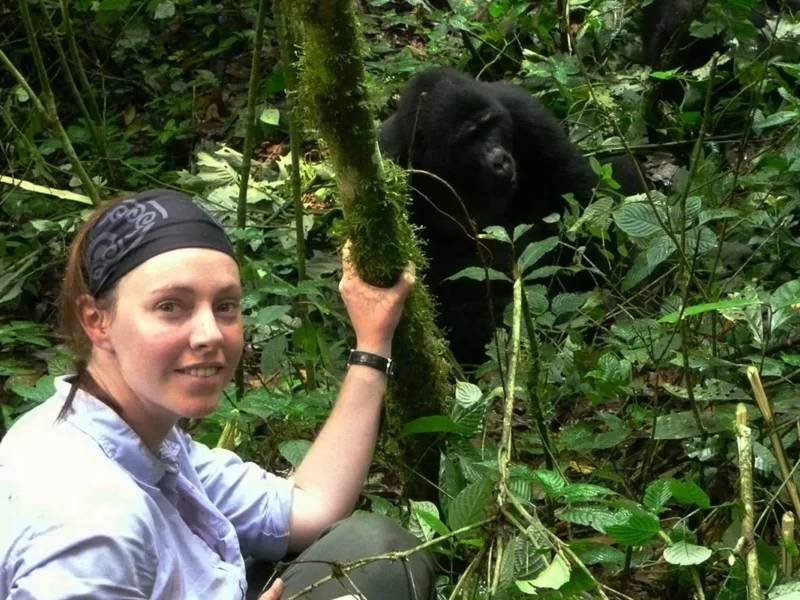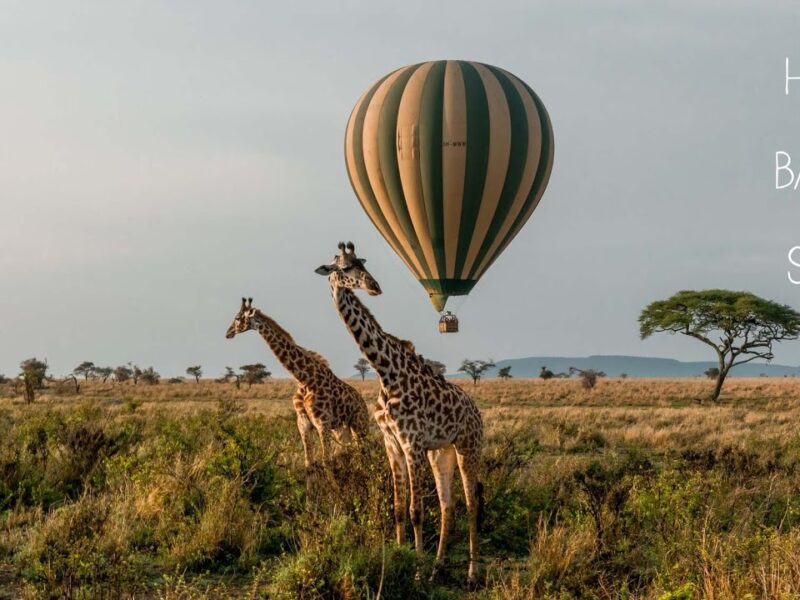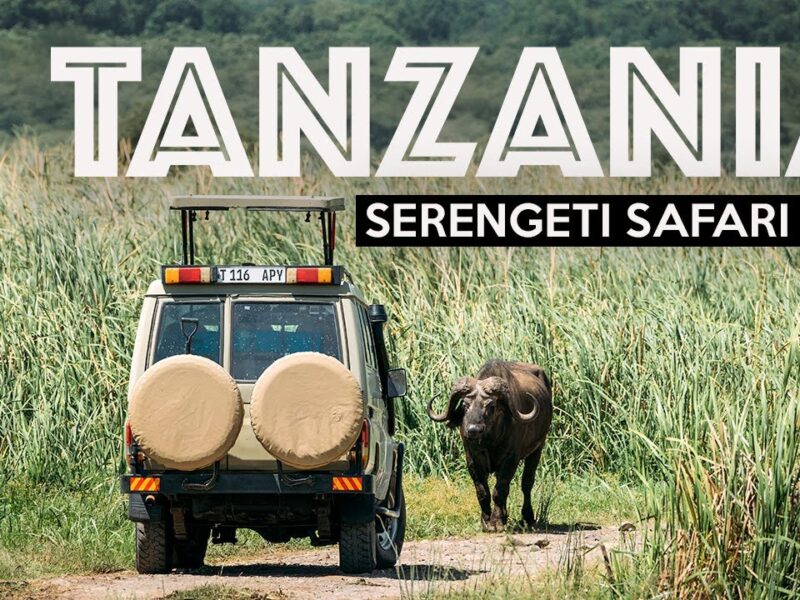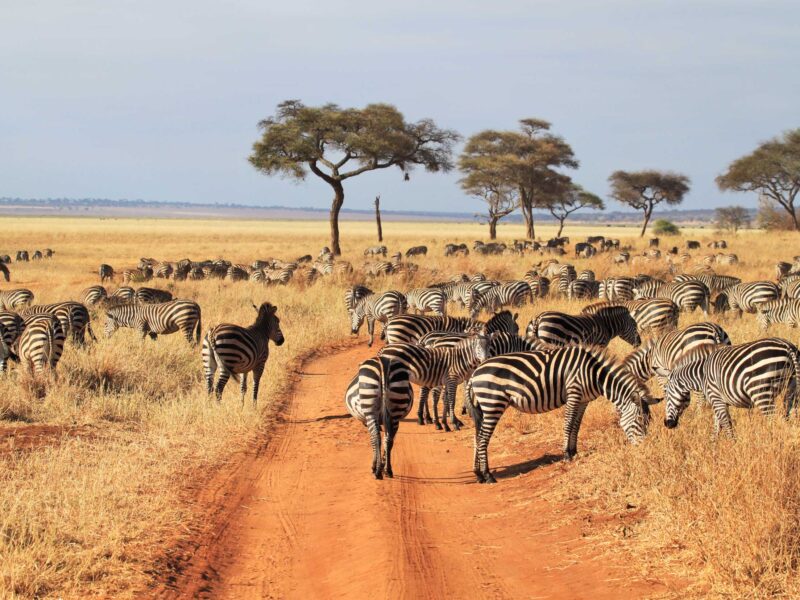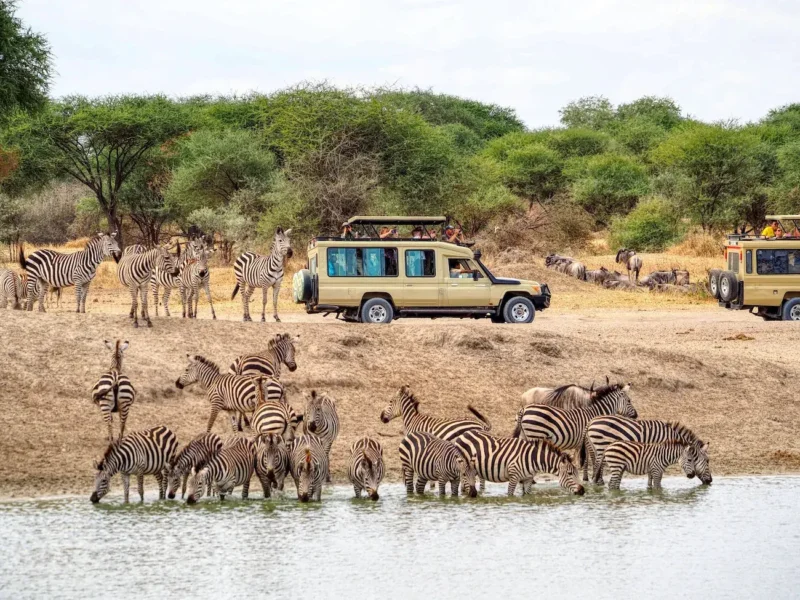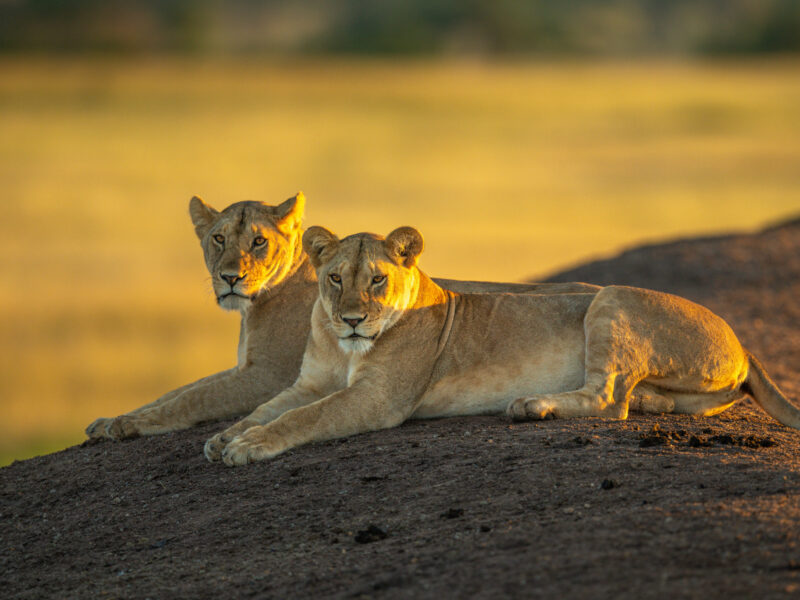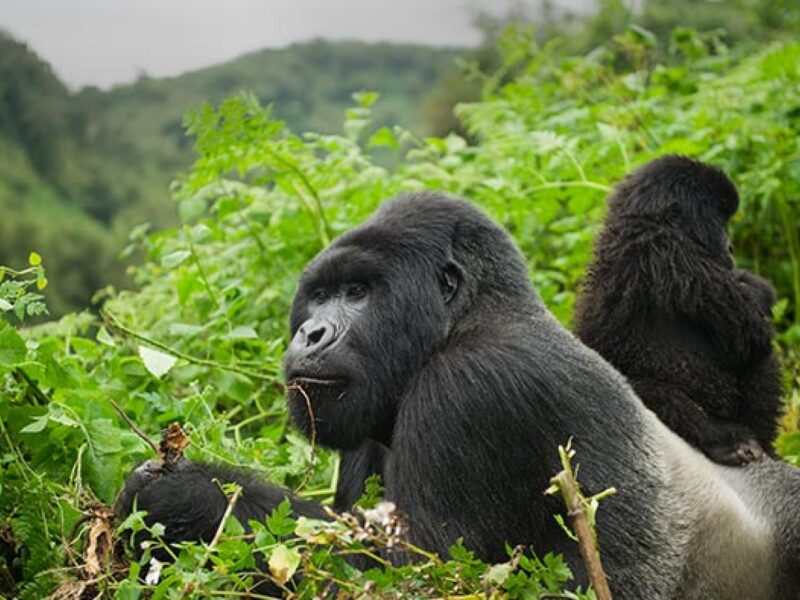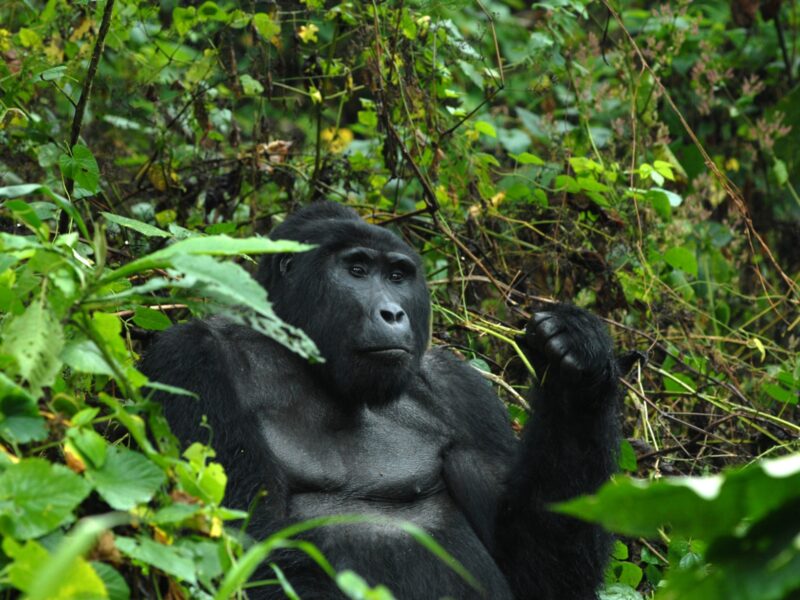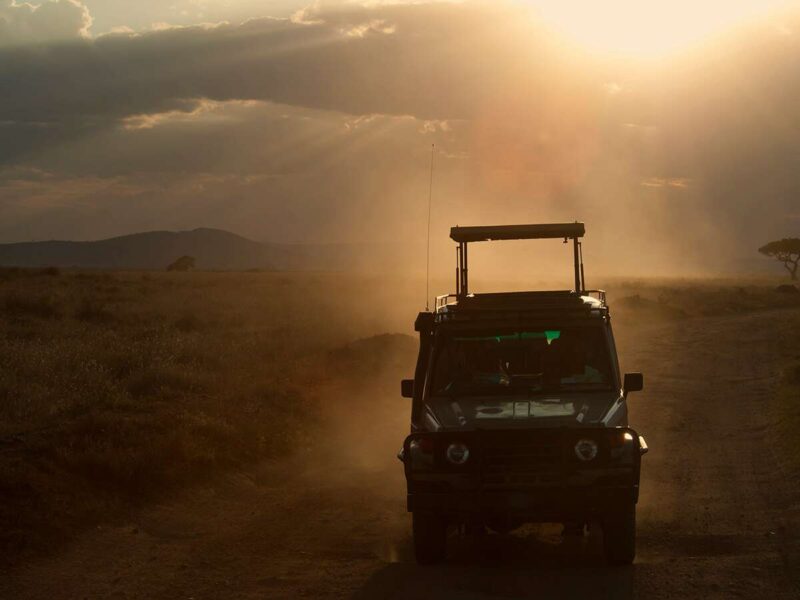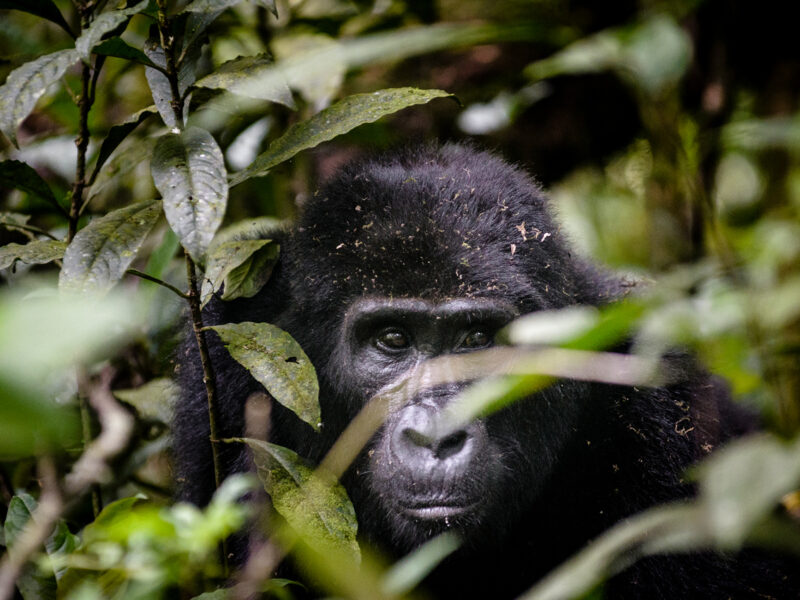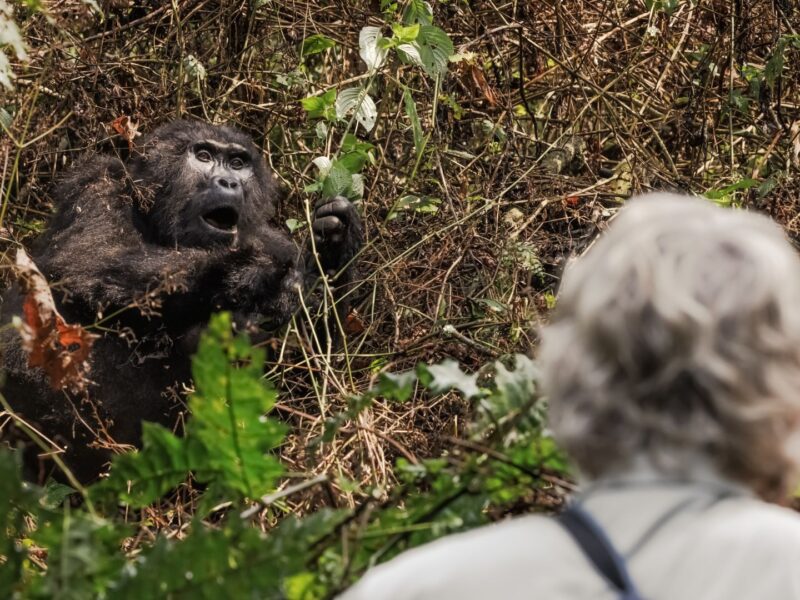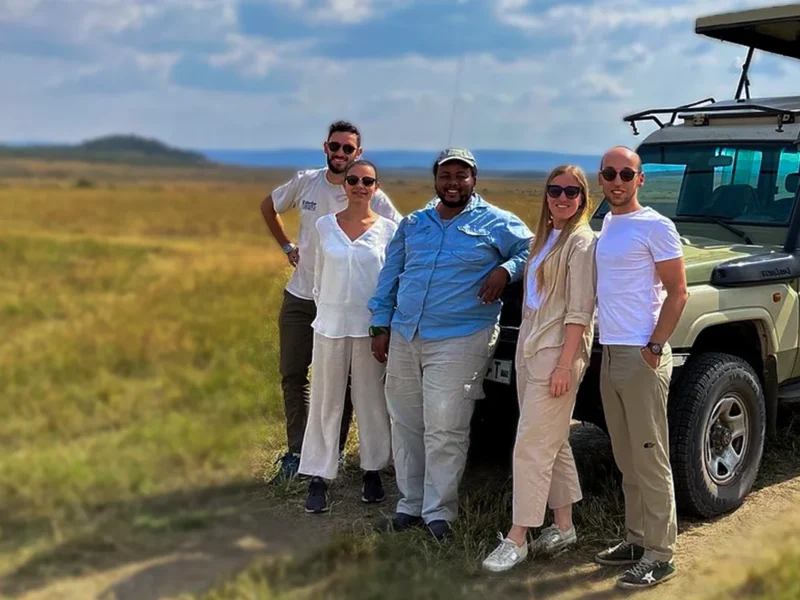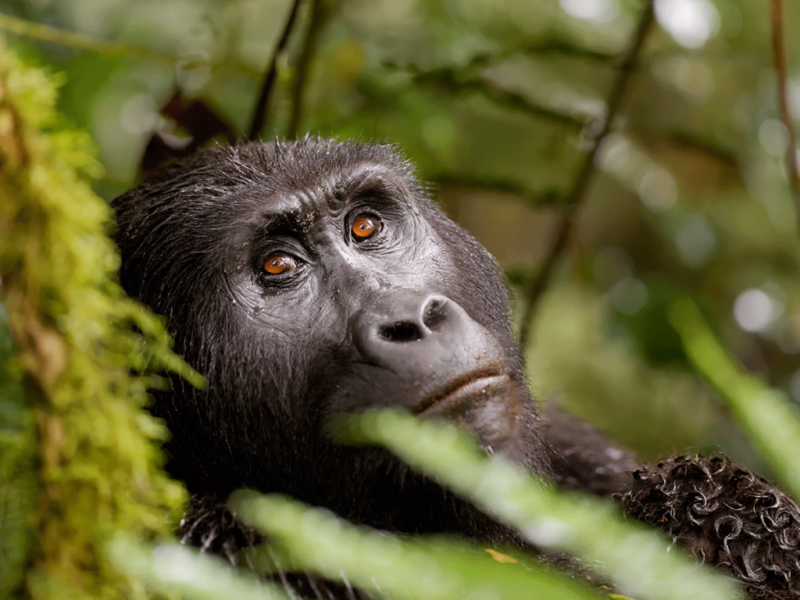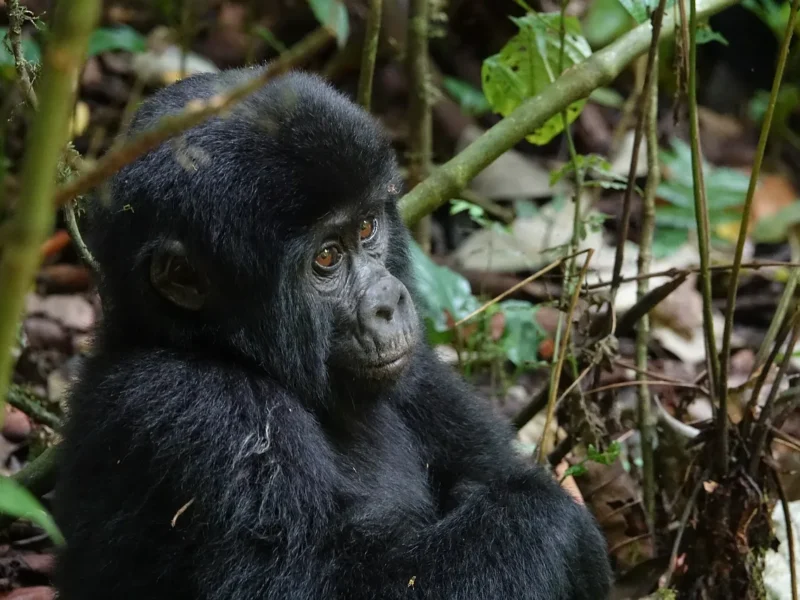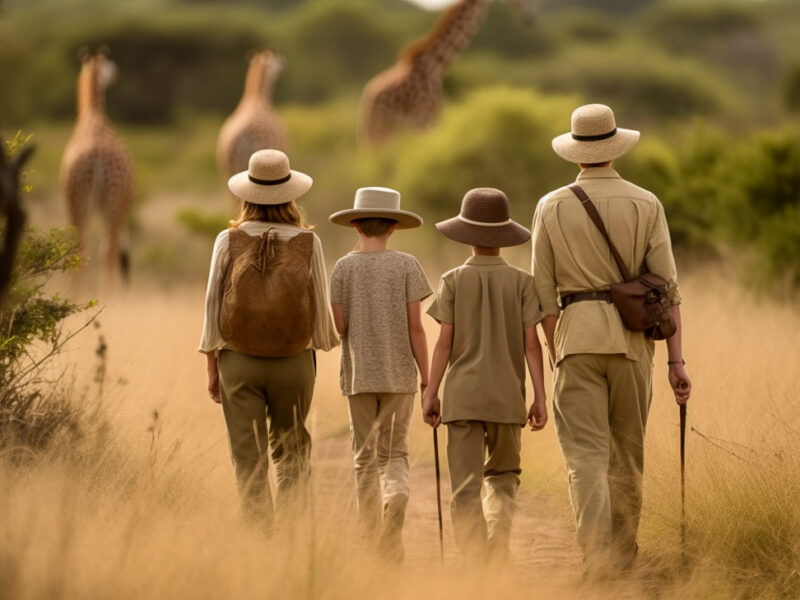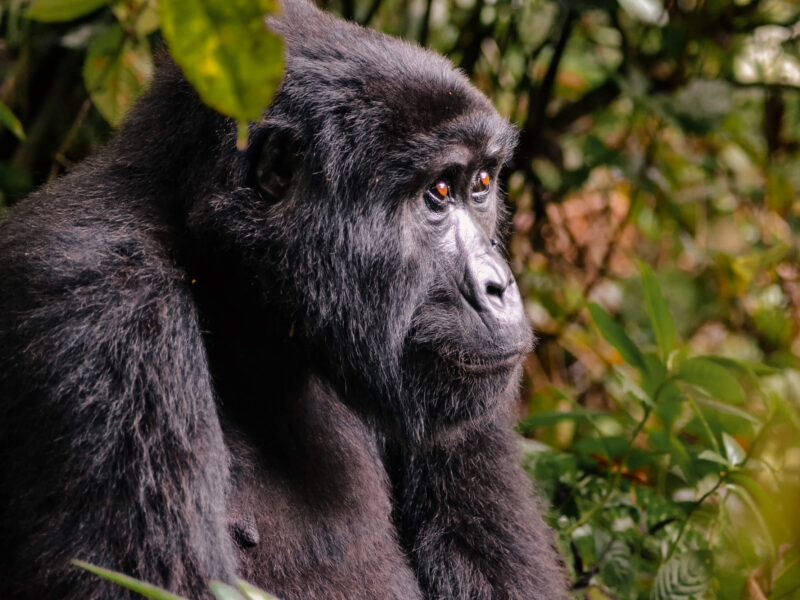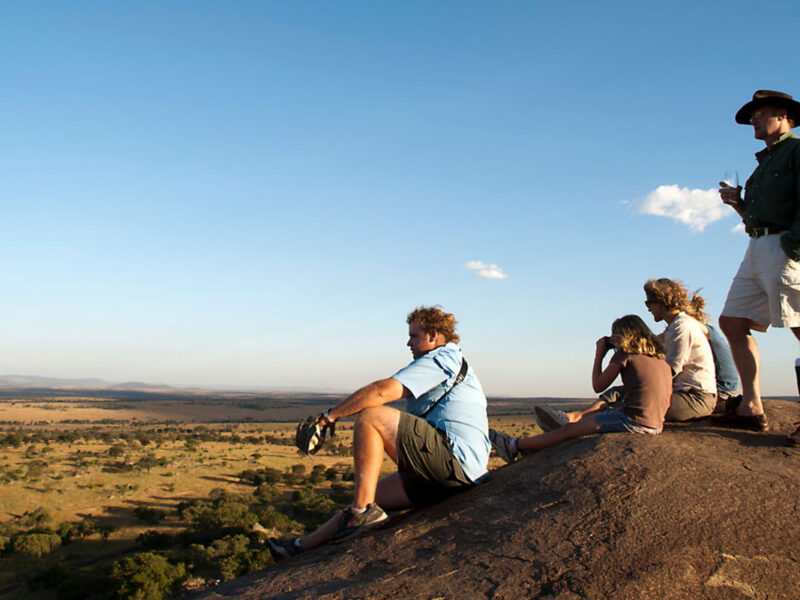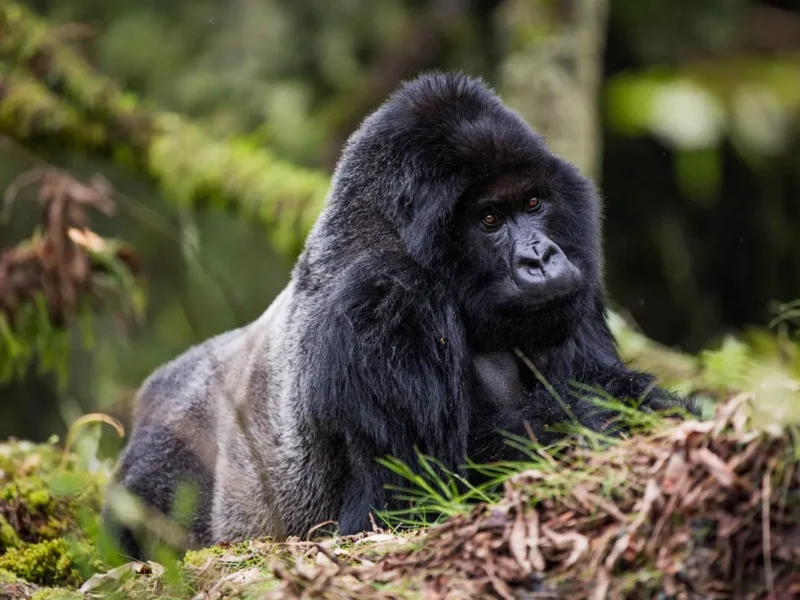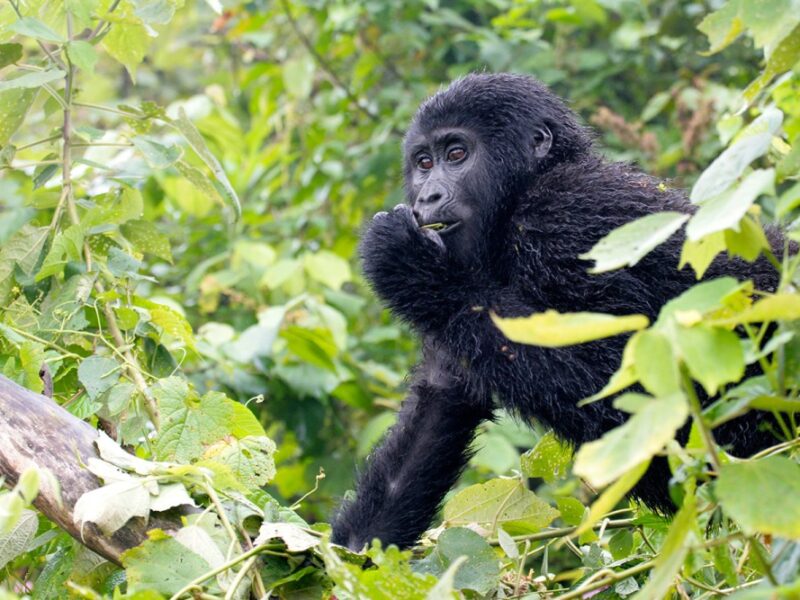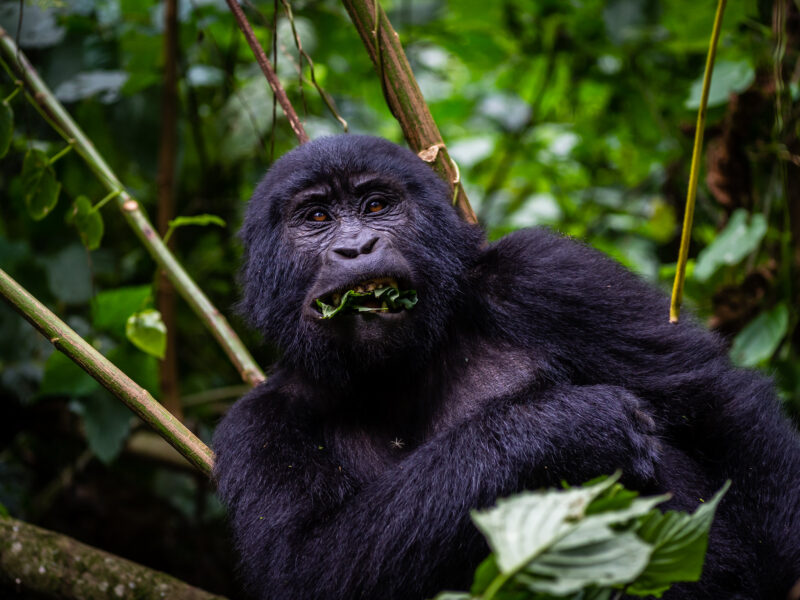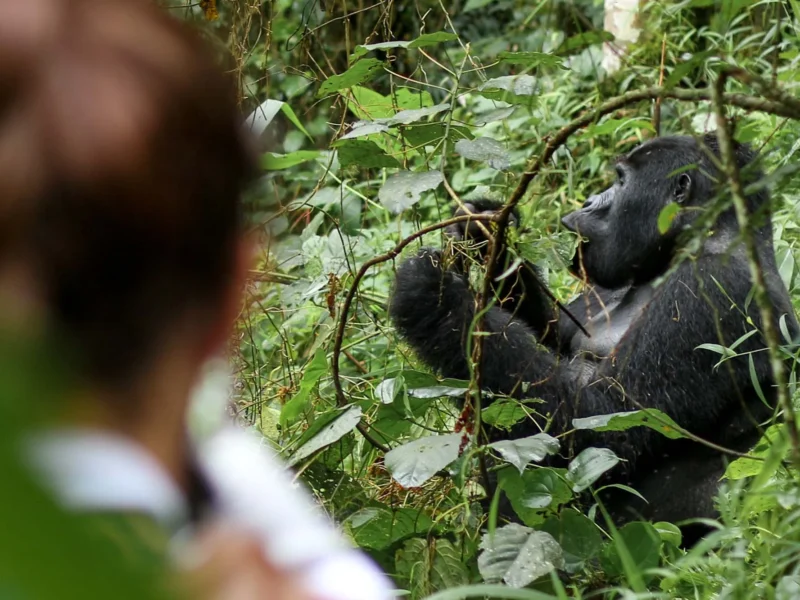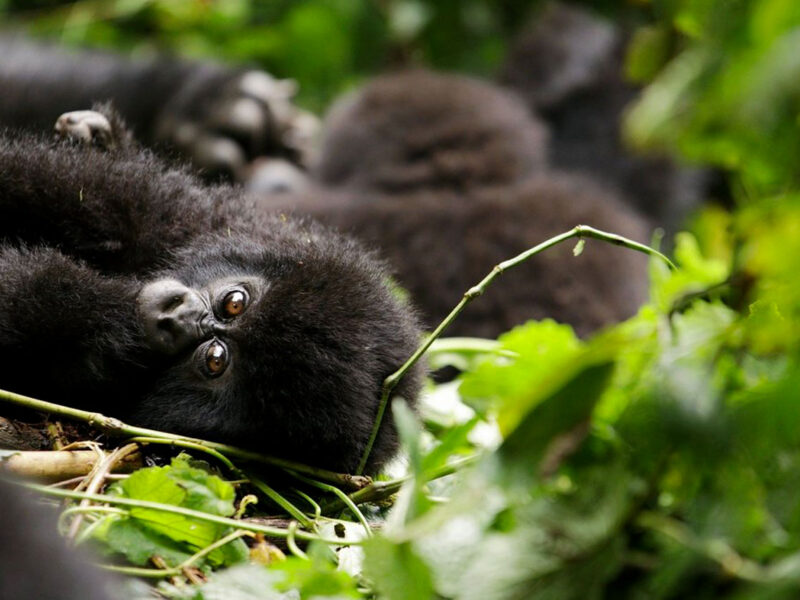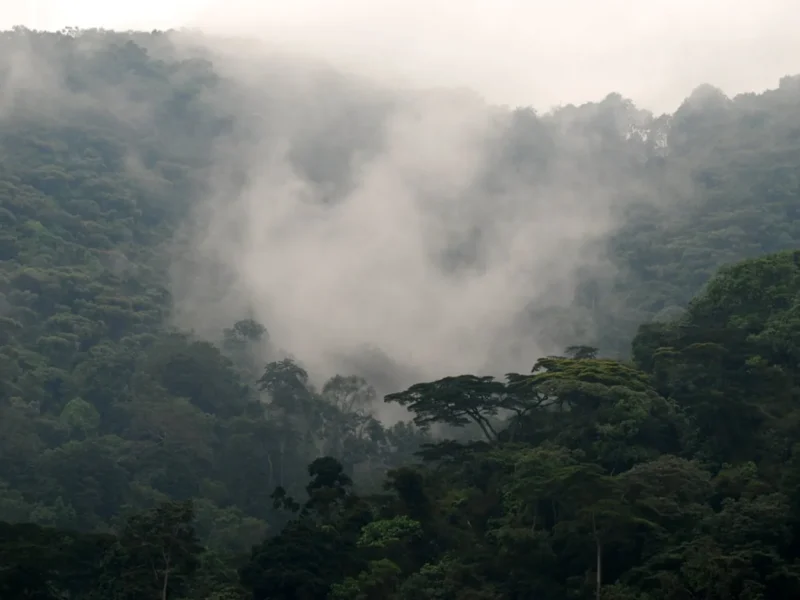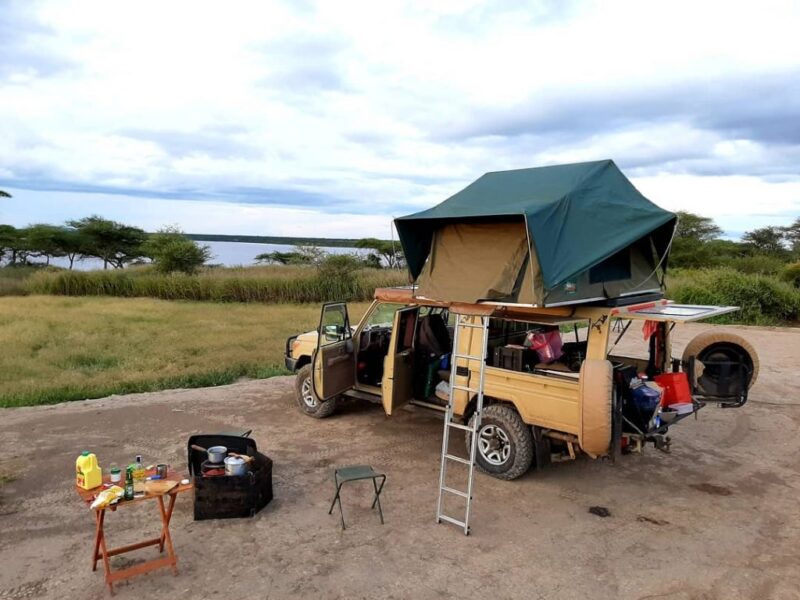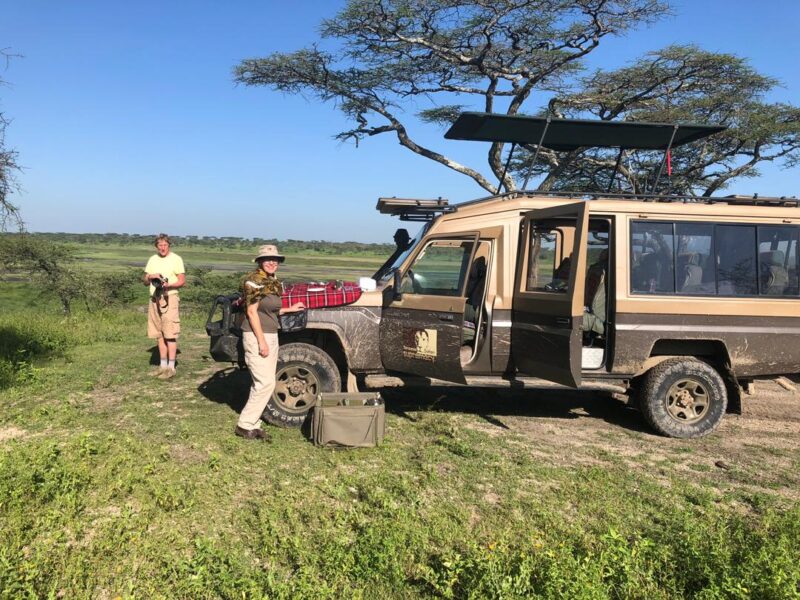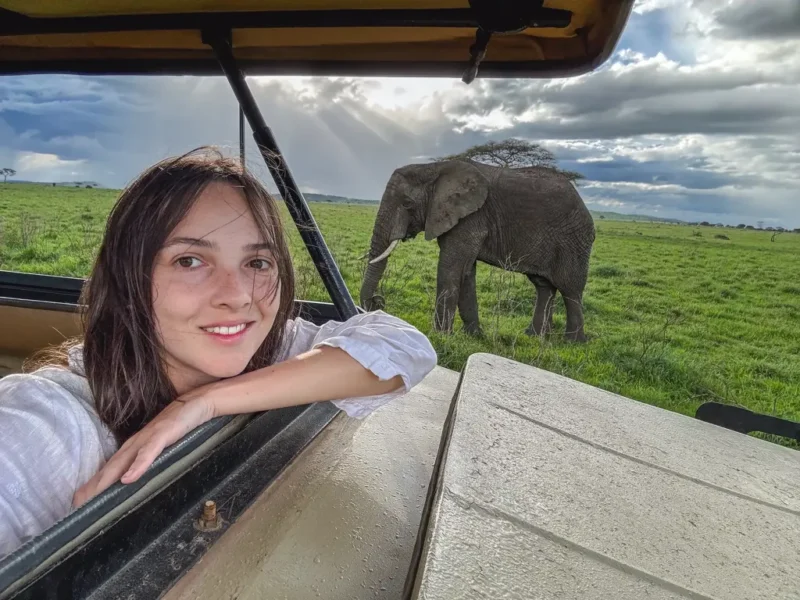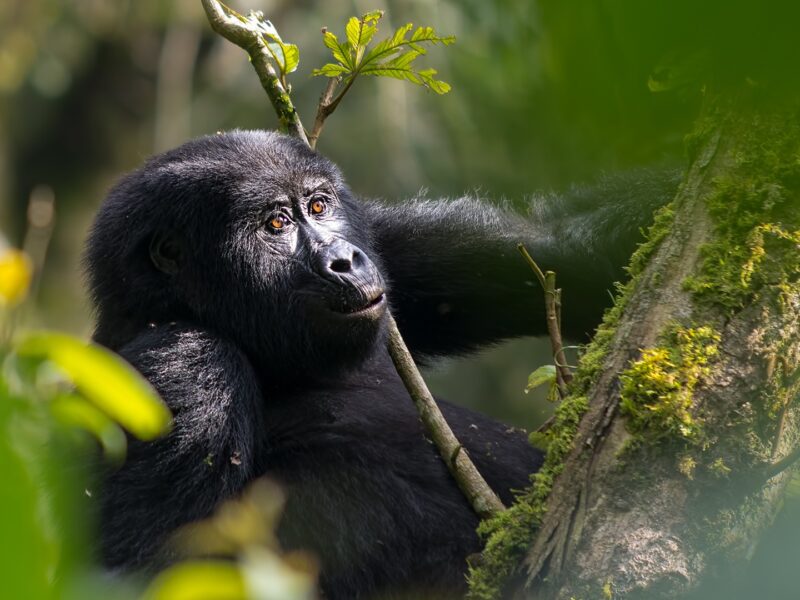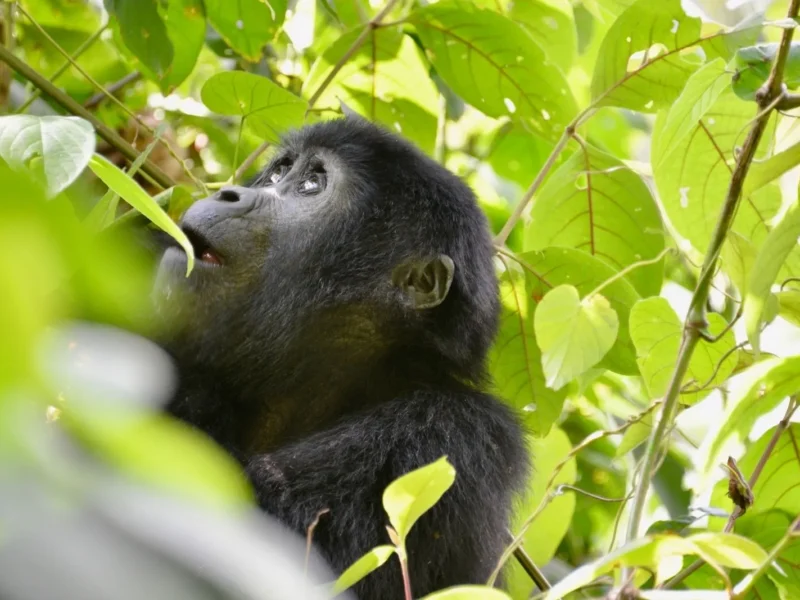Africa Cultural Safaris: Immersing in the Rich Tapestry of Uganda, Tanzania, Kenya, and Rwanda
Africa’s cultural diversity is as rich and varied as its landscapes. Cultural safaris in Uganda, Tanzania, Kenya, and Rwanda provide travelers with unique opportunities to engage with local communities, explore traditional lifestyles, and gain insights into the diverse heritage of these East African nations. Each country offers distinct cultural experiences that reflect the histories, traditions, and ways of life of its people.
Exceptional Africa Safari Holidays – Culture, Chimpanzee Tracking, Wildlife, & Gorilla Trekking
-
Tanzania Uganda Rwanda Tour
$ 2,988Embarking on the 7-Day Tanzania Uganda Rwanda Tour is akin to stepping into a realm where nature’s grandeur unfolds before your eyes with each passing day.
-
Kenya Uganda Rwanda Safari
$ 2,984Embark on a transformative journey through the heart of East Africa with the 7-Day Kenya Uganda Rwanda Safari, an immersive odyssey that promises a kaleidoscope of experiences.
-
Chimps & Gorilla Habituation
$ 3,7505-Day Chimpanzee & Gorilla Habituation Experience Uganda Safari Embark on an extraordinary adventure with the 5-Day Chimpanzee and Gorilla Habituation.
-
9-Day Tanzania Uganda Tour
$ 3,780Embark on an unforgettable adventure with the 9-Day Tanzania Uganda Tour, starting from the vibrant city of Arusha. This journey promises an immersive experience
-
9-Day Tanzania Adventure Safari
$ 4,1809-Day Tanzania Adventure Safari – Go Explore the Great Wildlife Migration Crossing Mara River. Tanzania is the best African safari country.
-
9-Day Kenya Road Safari
$ 2,480This 9-Day Kenya Road Safari is a great safari for a person who enjoys longer safaris. This 9-Day Kenya Road Safari has mid-luxury accommodations which can easily.
-
8-Day Tanzania Safari
$ 2,950Traford Safaris welcomes you to Tanzania, to enjoy a wonderful 8-Day Tanzania Northern Circuit Safari in our most reputable national parks.
-
8-Day Luxury Kenya Safari
$ 3,938This 8-Day Luxury Kenya Safari is a truly unrivalled cultural adventure that offers so much more than your average safari. Wildlife galore and breathtaking scenery.
-
8-Day African Safari Holiday
$ 3,3898-Day African Safari Holiday Visiting Rwanda and Uganda. Arrive at Kigali International Airport and transfer to your accommodation near Volcanoes National Park.
-
7-Day Uganda Primates Safari
$ 2,480Embark on an unforgettable 7-Day Uganda Primates Safari Expedition into the heart of Uganda’s pristine wilderness, immersing yourself in the fascinating worlds.
-
7-Day Tanzania Wildlife Tour
$ 2,986During this 7-Day Tanzania Wildlife Wonders Experience tour, you will start from Arusha, drive to and through Tarangire National Park, Lake Manyara National Park, the Ngorongoro Crater.
-
7-Day Rwanda Uganda Safari
$ 4,304Embark on a 7-Day Rwanda Uganda Safari adventure through the stunning landscapes and vibrant cities of Rwanda and Uganda, combining wildlife encounters with cultural immersion.
-
7-Day Rwanda Primates Tour
$ 3,580This 7-Day Discover Rwanda Primates in Luxury Tour is what makes Rwanda such a wonderful country, our Complete Rwanda tour covers a mixture of its natural beauty.
-
7-Day Kenya Wildlife Safari
$ 2,3807-Day Kenya Wildlife Safari to Amboseli, Naivasha, Nakuru & Masai Mara National Reserve Mid-Range Tour. Kenya is renowned for its vast wildlife and as an ideal destination.
-
7 Days Discover Rwanda Safari
$ 3,580This 7 Days Rwanda Safari is what makes Rwanda such a wonderful country, our Complete 7 Days Rwanda Safari covers a mixture of its natural beauty.
-
6-Day Uganda Adventure Tour
$ 2,380On the 6-Day Uganda Adventure Tour for Chimpanzee Tracking, Wildlife Tour, and Gorilla Trekking Experience Safari, you will visit three of Uganda’s amazing national parks.
-
6-Day Tanzania Wildlife Safari
$ 4,790In this 6-Day Majestic Tanzania Wildlife Luxury Safari, you will have the opportunity to visit the most iconic parks of the northern safari circuit of Tanzania. Visit Tarangire National Park.
-
6-Day Rwanda Uganda Tour
$ 2,580A wildlife lover’s dream 6-Day Ultimate Apes and Wildlife Rwanda Uganda Safari spanning two countries: The Rwanda and Uganda wildlife tour. Explore the wonders…
-
6-Day Kenya Big Five Safari
$ 2,380This is a 6-Day Private Kenya Big Five Safari with accommodations located close to the parks which provides guests with a convenient base for exploring the park and its wildlife.
-
6-Day Best of Rwanda Safari
$ 2,979This 6-Day Best of Rwanda Budget Safari is a great way to experience the wildlife and culture of Rwanda without breaking the bank. It includes a visit to the chimps in Nyungwe.
-
6 Days Tanzania Uganda Tour
$ 2,985Embark on an unforgettable adventure with the 6 Days Tanzania Uganda Tour, a journey that seamlessly blends the wild wonders of two East African gems: Tanzania and Uganda.
-
6 Days Rwanda Uganda Safari
$ 2,879This 6 Days Rwanda Uganda Safari starts from Kigali Genocide Memorial and then heads to Nyungwe Forest National Park for chimpanzee trekking and canopy walk.
-
6 Days Kenya Uganda Safari
$ 2,380Embark on an unforgettable journey with the 6 Days Kenya Uganda Safari Tour, starting from the vibrant city of Nairobi. Begin your adventure by immersing yourself.
-
5-Day Uganda Primates Safari
$ 2,380Embark on an exhilarating 5-Day Uganda Primates Safari journey through the verdant forests of Uganda, immersing yourself in the enchanting world of primates.
-
5-Day Rwanda Primates Safari
$ 3,480This 5-Day Rwanda Gorillas & Golden Monkeys Safari takes you on an amazing adventure in Volcanoes National Park known for its population of mountain gorillas.
-
5-Day Kenya Wildlife Safari
$ 1,1705-Day Kenya Wildlife Safari to Amboseli, Lake Naivasha, and Masai Mara National Reserve – Mid-Range Kenya Safari. This 5-Day Kenya Wildlife Safari journey is through Amboseli.
-
5-Day Kenya Big5 Safari
$ 1,980This 5-Day Kenya Big5 Safari begins with game drives in Lake Nakuru popular for a variety of bird-life including flamingos and both black and white rhinos.
-
5-Day Best Tanzania Big5 Safari
$ 1,635This 5-Day Best Tanzania Big5 Safari offers an exceptional opportunity to discover one of the most desirable locations for African safari tours: Northern Tanzania.
-
5 Days Uganda Safari
$ 2,890Traford Safaris offers you the opportunity of a breathtaking 5 Days Uganda Safari to Gorilla Trekking and Chimpanzee Trekking Experience to see leopard, waterbuck, lion, zebra…
-
4-Day Rwanda Wildlife Safari
$ 2,290Embark on a captivating 4-Day Rwanda Wildlife Safari through the diverse landscapes of Rwanda, combining the untamed wilderness of Akagera National Park.
Cultural Safaris in Uganda: Engaging with the Pearl of Africa’s Traditions
Uganda’s cultural safaris offer an intimate glimpse into the traditions and daily lives of its diverse ethnic groups, including the Baganda, Bakiga, and Batwa.
Key Cultural Locations in Uganda
- Buganda Kingdom: In the central region of Uganda, the Buganda Kingdom is one of the most prominent cultural sites. Visitors can explore the royal history and architecture at the Kabaka’s Palace in Kampala, the King’s tombs at Kasubi, and the Buganda Royal Tombs. Engaging with local Ganda people and participating in traditional ceremonies and dances provides deeper insight into the rich cultural heritage of the Buganda Kingdom.
- Bwindi Impenetrable Forest: Home to the Batwa Pygmies, an indigenous community with a unique way of life, Bwindi offers visitors a chance to learn about the Batwa’s traditional hunting and gathering practices. Cultural tours include visits to Batwa villages, where guests can participate in traditional dances and learn about the community’s deep connection to the forest.
- Kibale Forest and Surroundings: The nearby communities of Kibale Forest, such as the Bakiga and Batooro, offer cultural experiences including traditional music, dance, and crafts. Visitors can explore local markets and participate in village tours that showcase traditional Ugandan life.
Best Time to Go for Cultural Safaris in Uganda
The best time for cultural safaris in Uganda is during the dry seasons from December to February and June to August. During these months, travel conditions are more favorable, and cultural events and festivals are often scheduled. The wet seasons, from March to May and September to November, can also offer unique cultural experiences, but the weather may affect travel plans and accessibility.
Cultural Safaris in Tanzania: Discovering the Heritage of the Serengeti and Beyond
Tanzania’s cultural safaris provide an opportunity to engage with the diverse ethnic groups that inhabit the country, from the Maasai and Hadza to the Chaga and Swahili.
Key Cultural Locations in Tanzania
- Maasai Villages: The Maasai people, known for their distinctive dress and semi-nomadic lifestyle, are a highlight of Tanzania’s cultural safaris. Visitors can experience traditional Maasai rituals, dances, and crafts in villages near the Serengeti and Ngorongoro Crater. The Maasai also offer insights into their cattle-centered culture and traditional pastoral practices.
- Zanzibar: The island of Zanzibar is renowned for its rich Swahili culture, historic Stone Town, and vibrant spice markets. Visitors can explore the UNESCO World Heritage site of Stone Town, experience local cuisine, and visit spice farms to learn about the island’s historical role in the spice trade.
- Chaga Villages: On the slopes of Mount Kilimanjaro, the Chaga people offer a glimpse into their agricultural traditions and unique practices. Visitors can tour traditional Chaga homesteads, learn about the cultivation of coffee and bananas, and enjoy local music and dance.
Best Time to Go for Cultural Safaris in Tanzania
The best time for cultural safaris in Tanzania is during the dry seasons from June to October. The weather is generally dry and pleasant, making it ideal for visiting cultural sites and interacting with local communities. The wet seasons, from November to April, can be less favorable due to rain, though they also offer fewer tourists and a chance to experience local life in a more authentic setting.
Cultural Safaris in Kenya: Immersing in the Heritage of the Maasai and Beyond
Kenya’s cultural safaris offer a diverse range of experiences that highlight the traditions and lifestyles of its various ethnic groups, including the Maasai, Kikuyu, and Samburu.
Key Cultural Locations in Kenya
- Maasai Mara: The Maasai Mara is not only renowned for its wildlife but also for the Maasai communities that live in and around the reserve. Visitors can engage in Maasai cultural experiences such as traditional dances, beadwork demonstrations, and visits to Maasai homesteads. The Maasai’s vibrant culture and customs are showcased through interactive experiences that highlight their traditional way of life.
- Samburu National Reserve: The Samburu people, closely related to the Maasai but with distinct customs, offer cultural experiences in and around Samburu National Reserve. Visitors can learn about the Samburu’s pastoral lifestyle, traditional rituals, and unique crafts. The reserve itself provides a stunning backdrop for these cultural interactions.
- Gikambura Village: Near Nairobi, Gikambura offers insights into Kikuyu culture, including traditional ceremonies, music, and dance. Visitors can explore the Kikuyu’s agricultural practices and community life through guided village tours.
Best Time to Go for Cultural Safaris in Kenya
The ideal time for cultural safaris in Kenya is during the dry seasons from June to October. The dry weather makes travel to cultural sites easier and more comfortable, and it coincides with major cultural festivals and events. The wet seasons, from November to May, can be less convenient due to rain but provide a quieter and more authentic experience of local culture.
Cultural Safaris in Rwanda: Exploring the Heritage of the Land of a Thousand Hills
Rwanda’s cultural safaris offer an opportunity to engage with the diverse traditions and histories of its people, including the Hutu, Tutsi, and Twa communities.
Key Cultural Locations in Rwanda
- Kigali: The capital city of Kigali is a vibrant cultural hub where visitors can explore the Kigali Genocide Memorial, which provides insights into Rwanda’s recent history and the reconciliation process. Additionally, Kigali offers opportunities to experience local markets, traditional crafts, and Rwandan cuisine.
- Nyanza: Nyanza, formerly the capital of the Kingdom of Rwanda, is home to the Royal Palace and the Rwesero Art Museum. Visitors can learn about Rwanda’s monarchical history and traditional crafts, including basket weaving and pottery.
- Butare: Known for its rich cultural heritage, Butare is home to the National Museum of Rwanda, which showcases the country’s history, art, and traditional artifacts. The nearby ethnographic museum provides deeper insights into Rwanda’s diverse ethnic groups and cultural practices.
Best Time to Go for Cultural Safaris in Rwanda
The best time for cultural safaris in Rwanda is during the dry seasons from June to September and December to February. These periods offer pleasant weather for exploring cultural sites and participating in local events. The wet seasons, from March to May and October to November, are also good times to visit, though travel may be affected by rain.
Conclusion: A Journey Through Africa’s Cultural Riches
Cultural safaris in Uganda, Tanzania, Kenya, and Rwanda provide a fascinating journey into the heart of East Africa’s diverse traditions and histories. Each country offers unique opportunities to engage with local communities, learn about traditional practices, and gain a deeper understanding of the region’s cultural heritage. Timing your visit to coincide with optimal weather conditions and local festivals can enhance the cultural experience and ensure a memorable and enriching adventure.


